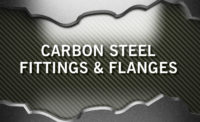Carbon Steel report: February 2017

Domestic Pipe
After seeing increases in domestic steel pipe, we seem to have reached a period of flattening. As the demand for domestic tubing increases, expect deliveries for small diameter welded pipe to stretch out. Domestic seamless, 2.0-in. through 6-in., also is experiencing longer lead times due to strong demand and lack of inventories.
We could see upward pressure on the domestic market in 2Q 17, depending on the rulings for various trade cases on import OCTG and line pipe from Korea and other manufacturers. Rulings on these cases have been postponed until March.
As with everything in the PVF industry, the energy sector will have a large effect on pricing. In January, the U.S. Energy Information Administration released its outlook for 2017 and 2018, which included WTI and Brent crude pricing along with production forecasts.
U.S. crude oil production averaged an estimated 8.9 million barrels per day in 2016. According to one forecast, U.S crude oil production is expected to average 9 million barrels per day in 2017 and 9.5 million barrels per day in 2018. The analysts stated the forecast increases largely reflect federal offshore production in the Gulf of Mexico along with rising tight oil production.
Also, with the president signing executive orders to revive the Dakota and Keystone pipeline projects, it appears these projects are moving forward and will create additional demands on transmission line infrastructure.
Import pipe
Similar to the domestic market, the sharp upward pricing on import steel pipe has slowed. It’s reasonable to expect a softening in pricing starting in 2Q 17 due to HRC being hedged through 1Q 17 and price decreases for coking coal and iron ore.
It’s also reasonable to expect shortages on 2-in. through 8-in. pipe due to strong import tube demand, and most mills have switched from standard and line pipe.
Weld fittings and flanges
Market conditions have started to improve. President Trump is pushing an agenda that is favorable to business and growth. The Dakota and Keystone pipeline projects have been given approval to move forward and it is expected work on these pipelines will lead to additional projects requiring carbon steel weld fittings and flanges.
Recent price increases on carbon steel flanges have averaged 10%. Carbon butt weld fittings have increased 5-15%. Forecasts are mixed on future prices as the impact of the anti-dumping case brought by Weldbend and Boltex reaches the marketplace.
The Baker Hughes Rotary Rig Count on Feb. 10 reflects the year-over-year improvement in operating rigs. The rig count in North America is 1,093 oil and gas rigs compared to 763 at the same time in 2016. Oil rigs stand at 798 vs. 557 a year ago and gas rigs are 294 vs. 206 in 2016.
At the time of this writing, WTI crude is $53.20 per barrel and is forecast at one year out to be $61 per barrel. Natural gas, as priced at the Henry Hub, is $2.91 per dekatherm vs. $3.48 per dekatherm in February 2016. A mild winter in the U.S. has lowered demand and impacted current pricing.
Forged steel fittings
The outlook for 1Q 2017 remains flat. Pricing has been stable for an extended period of time, and there is a sufficient supply of both import and domestic fittings in the market. Import lead times are favorable and consistent, lending to strong supply. There is more stability and activity in the oil field; however, not enough to affect pricing. Other key markets, such as the industrial segment, are gaining momentum but have not hit historic levels. Both manufacturers and distributors are competing for a smaller piece of available market share creating very competitive conditions.
Looking for a reprint of this article?
From high-res PDFs to custom plaques, order your copy today!




